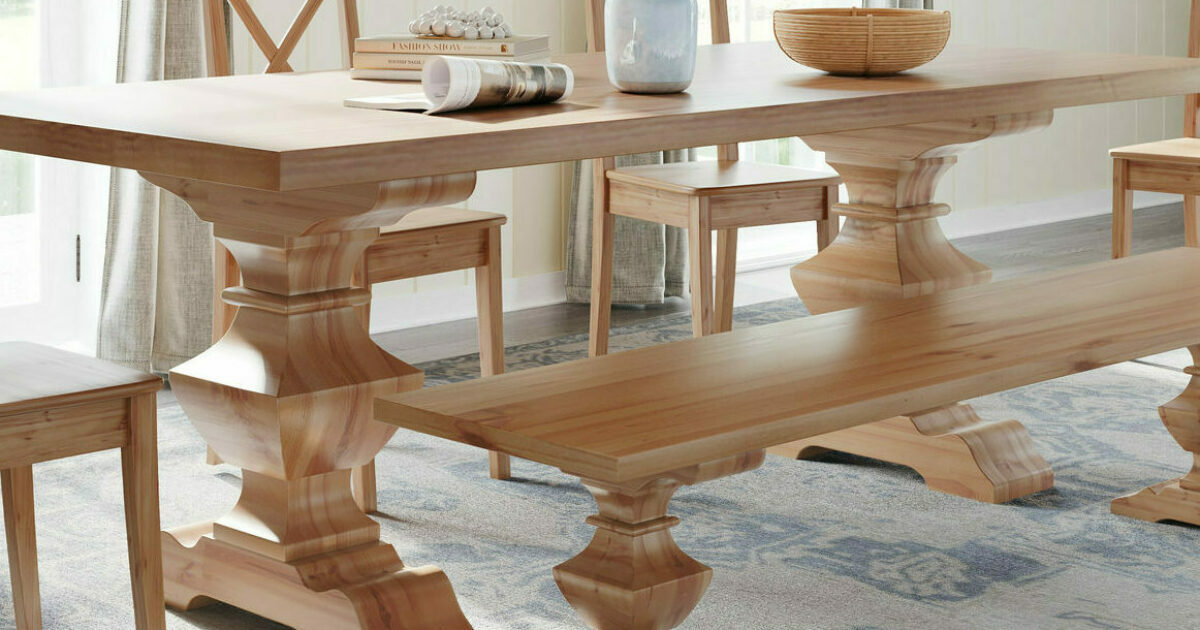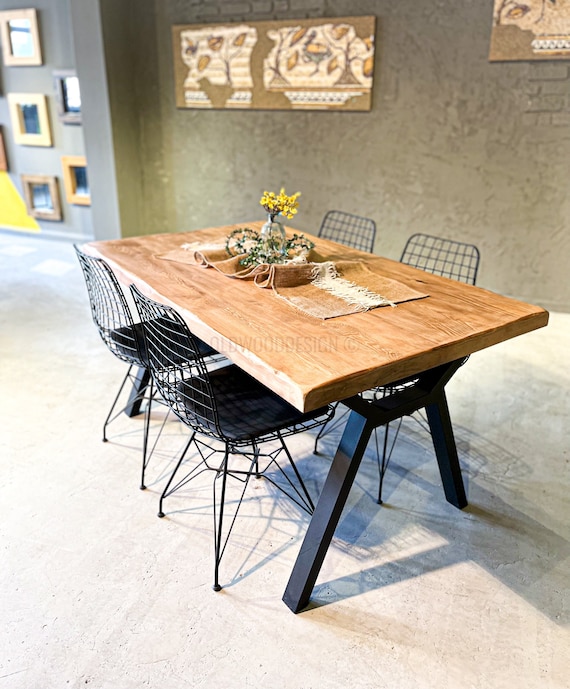Change Your Furnishings with Premium Dining Table Legs Wood Options
Key Factors to Maintain in Mind for Eating Table Legs Wood Choices
When choosing wood for eating table legs, numerous important variables require cautious factor to consider to make certain both functionality and aesthetic charm. The selection of timber type, identified by its durability and special grain patterns, plays a critical duty in the total style and long life of the piece. In addition, one have to contemplate upkeep requirements and the ecological effects of sourcing products. As these components intertwine, they considerably influence the last result of your eating table. Nonetheless, comprehending the nuances of each factor can be intricate, resulting in vital decisions that warrant more expedition.
Timber Kind and Characteristics
When choosing timber for dining table legs, it is important to understand the unique attributes of various wood kinds. Different timbers use distinct advantages and downsides, affecting both the longevity and aesthetic allure of the ended up item.
Hardwoods, such as maple, cherry, and oak, are generally chosen for their stamina and resistance to wear. Oak, recognized for its impressive longevity, also features a noticeable grain that can include personality to the table. Maple uses a smooth surface and is less prone to bending, making it a trusted option for practical furniture. Cherry wood, with its abundant color that deepens with time, gives an elegant look however may require more maintenance to protect against scratches.
On the other hand, softwoods like yearn and fir are extra affordable and less complicated to deal with, yet they are less long lasting than woods. Pine is lightweight and includes a warm, rustic look, making it a favored selection for informal eating settings. It is more at risk to damages and scratches.
Understanding these characteristics will certainly help in making an educated choice to ensure the legs of the table satisfy both visual and functional requirements.
Grain Patterns and Looks
Selecting the best grain pattern can substantially boost the visual appeal of dining table legs. The wood's grain is not simply an aesthetic characteristic; it imparts a distinct personality and beauty per piece. Various timber varieties display distinctive grain patterns, varying from the straight lines of maple to the intricate swirls of oak and the striking number of walnut. These patterns can stimulate various designs, from rustic to modern, making it important to choose a grain that lines up with the overall design of the dining area.
Additionally, the positioning and scale of the grain can affect the viewed size and style of the table. As an example, larger, a lot more noticable grains might offer a bold, dramatic effect, while finer, subtler grains can create a fine-tuned, understated appearance. Furthermore, the finishing process can better boost these patterns, stressing the natural elegance of the wood and highlighting rich colors.
Eventually, the option of grain pattern need to balance with various other design elements, such as the table top and surrounding furnishings, making certain a natural aesthetic that elevates the dining experience. Thoughtful option of wood grain not only adds to the table's beauty however additionally mirrors the owner's taste and design.
Sturdiness and Stamina
The sturdiness and stamina of eating table legs are critical considerations for making sure durability and stability in any type of eating look at this web-site space. Picking the ideal timber is important, as various species display varying levels of resilience.

Eventually, spending like this in premium timber and robust construction methods will yield a table that stands the examination of time, while offering a reliable foundation for numerous dishes shared amongst household and friends. Prioritizing resilience and toughness guarantees that your dining table continues to be practical and visually pleasing for many years ahead.
Maintenance and Treatment
Proper upkeep and treatment are crucial for protecting the toughness and stamina of table legs made from timber. Regular cleansing is essential; making use of a soft, wet cloth makes certain that dirt and debris do not accumulate, which can cause scrapes and dullness. It is recommended to prevent harsh chemicals or unpleasant products that can damage the finish.
Additionally, applying a suitable wood gloss or wax occasionally can assist keep the luster and safeguard the timber from moisture and spills. It is critical to follow the maker's suggestions concerning the type of product to make use of, as specific surfaces may react adversely to details chemicals.
Humidity and temperature changes can additionally impact wooden table legs, triggering them to warp or split. It's ideal to put the table away from direct sunlight and heat sources. If the table legs have any type of scratches or dents, addressing these quickly can prevent further damages.
Lastly, periodically evaluating the joints and screws for tightness is necessary to keep architectural integrity (Dining Table Legs Wood). By adhering to these upkeep practices, home owners can guarantee their wooden eating table legs stay functional and enticing for several years to come
Environmental Factors To Consider
When selecting wood for eating table legs, it's important to take environmental considerations right into account. The sourcing and sustainability of timber are paramount in minimizing eco-friendly effect. Selecting timber from qualified resources, such as those recommended by the Forest Stewardship Council (FSC), ensures that the wood is gathered properly, promoting forest conservation and biodiversity.

Moreover, regional sourcing of wood reduces transport emissions, sustaining regional economies while lessening environmental influence. It is likewise suggested to be knowledgeable about the wood's therapy and ending up processes, as specific chemicals can be hazardous to both human health and wellness and the environment. By focusing on lasting wood selections, consumers can add to environmental conservation while taking pleasure in the longevity and charm of their table legs.
Final Thought
In final thought, picking wood for dining table legs necessitates mindful factor to consider of various aspects, including wood kinds, grain patterns, and toughness. Upkeep needs and environmental sustainability more influence timber selections, stressing the Full Report importance of sourcing from certified or reclaimed products.
When choosing timber for eating table legs, a number of vital variables warrant mindful consideration to ensure both capability and visual charm.Proper maintenance and care are crucial for maintaining the toughness and strength of dining table legs made from wood.When selecting wood for dining table legs, it's vital to take environmental factors to consider into account. By focusing on sustainable wood choices, consumers can add to environmental preservation while enjoying the longevity and appeal of their dining table legs.
In final thought, choosing timber for eating table legs requires careful factor to consider of various factors, including wood kinds, grain patterns, and longevity. Dining Table Legs Wood.